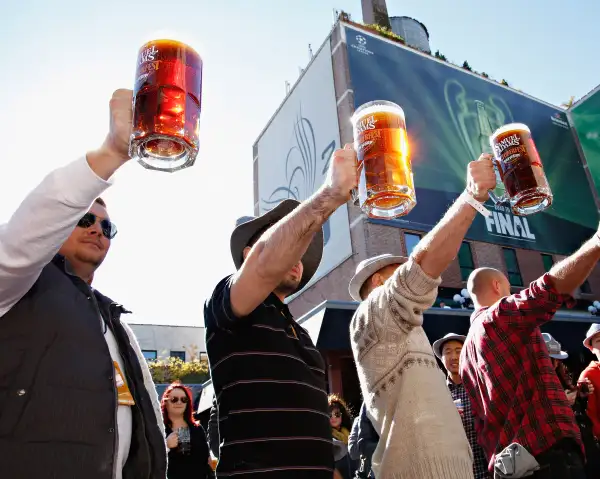Our Love for Craft Beer Hits New Heights

A new report from the American Brewers Association shows that craft beer sales rose 18% by volume and 22% in dollars in 2014, while overall U.S. beer sales inched up just 0.5%. What's more, craft beer has hit double digits in terms of market share for the first time, reaching 11% of all beer sales by volume.
For a little perspective about how quickly craft beer is being embraced by the masses, note that the category accounted for only 5% of all American beer sales in 2010. The number of U.S. breweries has skyrocketed over the years as well, from about 1,500 in 2008, to around 2,000 breweries in 2011, on upwards to nearly 3,500 today, including more than 600 new ones opened just last year.
The Brewers Association defines a craft brewer as one that is small, independent, and traditional. The guidelines mean that Samuel Adams is indeed a craft brew—the company produces fewer than 6 million barrels annually, which is the cutoff for being considered "small"—while beer labels such as Blue Moon and Shock Top are not because they are owned, respectively, by beer giants MolsonCoors and Anheuser-Busch InBev. Such seemingly craft brews are often categorized, derisively, as "crafty" beer brands because the labels underplay or completely hide the fact that they're owned and produced by the world's biggest beer companies.
The Big Beer vs. Craft Beer battle has periodically grown testy over the years. Most recently, a Budweiser ad mocking craft beer aired during the Super Bowl in an attempt to revamp its stale image and boost flagging sales. The strategy seemed puzzling to many because Bud's corporate parent has been buying craft beer brands left and right, while also pushing Budweiser offshoot brands that are supposedly more sophisticated and should therefore appeal to craft beer fans.
In any event, when you look at shrinking sales for macrobrew standards like Miller Genuine Draft, Miller High Life, and Budweiser on the one hand, and soaring sales for the craft beer segment on the other, it's pretty clear which side is winning the battle for drinkers' dollars.
MORE: Monks, the Original Hipster Entrepreneurs, Make Some of the World's Best Craft Beer
